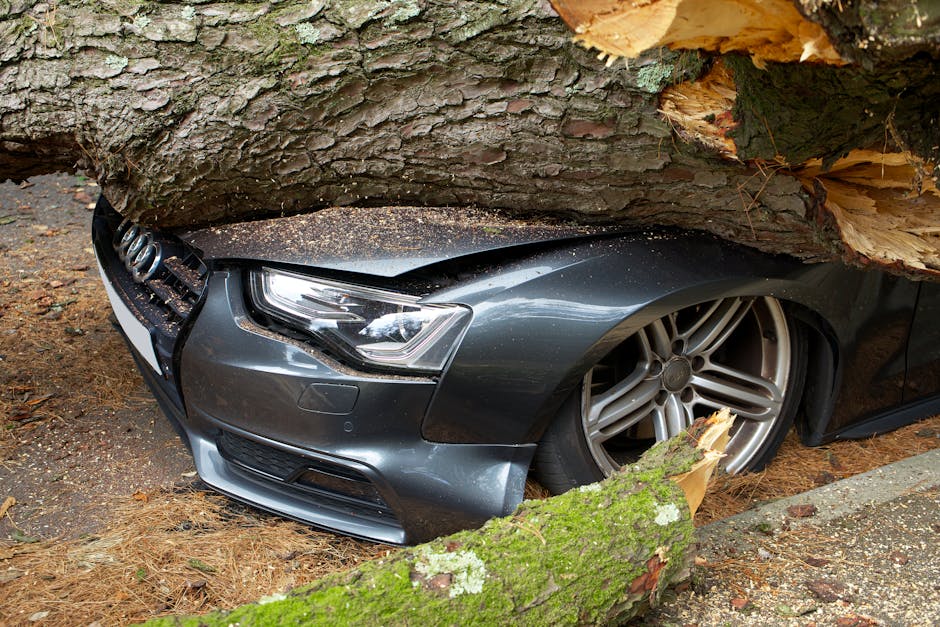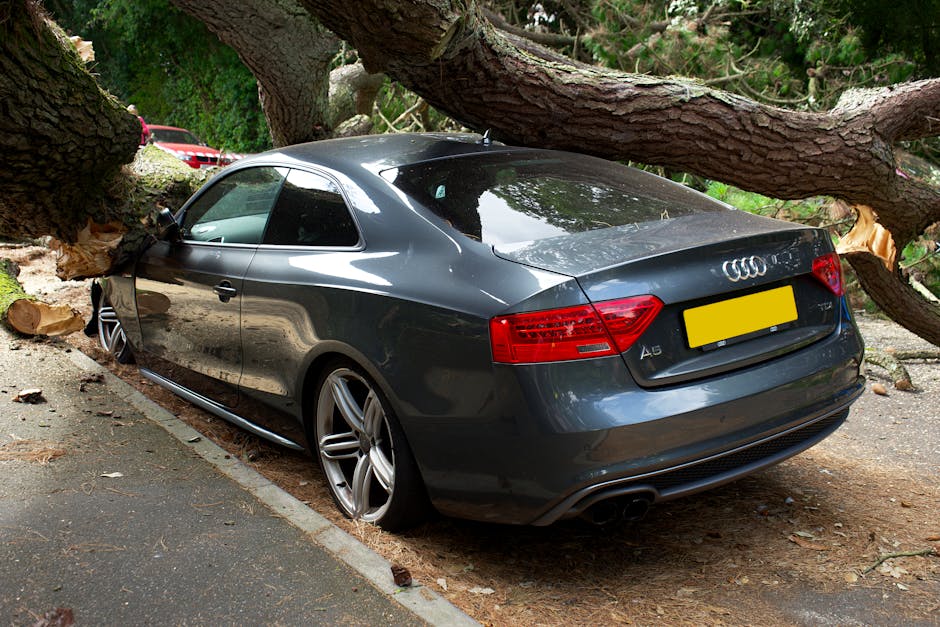The Impact of Vehicle Type on Insurance Rates
When it comes to car insurance, many factors come into play to determine the rates individuals pay. One of the most significant factors that influence insurance premiums is the type of vehicle being insured. Whether you’re driving a compact sedan, a luxury SUV, or a sports car, the type of vehicle you choose can have a profound impact on how much you pay for insurance.
Introduction

Have you ever wondered why your friend who drives a sports car pays more for insurance than your neighbor who drives a minivan? The type of vehicle you drive plays a crucial role in determining your insurance rates. From the make and model to the safety features and performance capabilities, every aspect of your car can affect how much you pay for coverage.
In this article, we will delve into the various ways in which vehicle type influences insurance rates. We will explore the different factors insurers consider when calculating premiums and how your choice of vehicle can either increase or decrease your insurance costs. So buckle up as we take a deep dive into the world of car insurance and vehicle types.
Vehicle Make and Model

One of the primary factors that insurers consider when determining insurance premiums is the make and model of the vehicle. Certain makes and models are more expensive to insure due to a variety of reasons, including the cost of repairs, safety ratings, and likelihood of theft. Luxury vehicles, sports cars, and high-performance vehicles tend to have higher insurance rates compared to more affordable and practical cars.
For example, a brand new BMW M3 will generally have higher insurance premiums than a Toyota Camry. This is because the BMW M3 is a high-performance sports car that is more expensive to repair and has a higher likelihood of being involved in accidents. On the other hand, the Toyota Camry is a reliable and safe sedan that is less likely to be involved in accidents, resulting in lower insurance premiums.
Safety Features

The safety features of a vehicle can also impact insurance rates. Cars that are equipped with advanced safety features such as automatic emergency braking, lane departure warning, and adaptive cruise control are generally safer to drive and less likely to be involved in accidents. As a result, vehicles with these safety features may qualify for lower insurance premiums.
On the other hand, vehicles that lack modern safety features or have poor safety ratings may have higher insurance rates. For example, a car with a low safety rating from the Insurance Institute for Highway Safety (IIHS) may be more expensive to insure due to the increased risk of injury or damage in the event of an accident.
Performance Capabilities

The performance capabilities of a vehicle, such as horsepower, top speed, and acceleration, can also impact insurance rates. High-performance vehicles that are designed for speed and agility are more likely to be involved in accidents compared to standard vehicles. As a result, insurance companies may charge higher premiums for cars with powerful engines and high-performance capabilities.
Additionally, sports cars and exotic vehicles are often more expensive to insure due to their increased risk of theft and vandalism. Insurers take into account the cost of replacing or repairing these vehicles when calculating premiums, which can result in higher insurance rates for owners of sports cars and exotic vehicles.
Historical Background
The relationship between vehicle type and insurance rates has evolved over the years as cars have become more advanced and sophisticated. In the past, insurance companies relied on simple factors such as age, gender, and driving record to determine premiums. However, as technology has advanced and vehicles have become safer and more complex, insurers now consider a wide range of factors when calculating insurance rates.
Advancements in vehicle safety, such as the development of automatic braking systems, adaptive headlights, and blind-spot monitoring, have made cars safer to drive and reduced the likelihood of accidents. As a result, vehicles that are equipped with these safety features may qualify for discounts on insurance premiums, encouraging drivers to choose safer vehicles.
Current Applications
Today, insurance companies use sophisticated algorithms and data analytics to calculate insurance premiums based on a wide range of factors, including vehicle type. Insurers collect data on the make and model of the vehicle, its safety features, performance capabilities, and historical claims data to assess the risk of insuring a particular vehicle.
By analyzing this data, insurers can accurately price insurance policies based on the unique characteristics of each vehicle. This data-driven approach allows insurance companies to offer competitive rates to drivers while ensuring that they are adequately protected in the event of an accident or loss.
Future Implications
As technology continues to advance and vehicles become more autonomous and connected, the relationship between vehicle type and insurance rates is likely to evolve. Self-driving cars and electric vehicles are becoming more prevalent on the roads, raising questions about how insurance companies will price policies for these innovative vehicles.
Insurers may need to adapt their pricing models to account for the unique risks associated with self-driving cars, such as software malfunctions, cyber-attacks, and accidents involving autonomous vehicles. Additionally, the rise of electric vehicles presents new challenges for insurers, such as the cost of repairing or replacing batteries and the availability of charging infrastructure.
Common Misconceptions
One common misconception about vehicle type and insurance rates is that red cars are more expensive to insure. While the color of a car can affect its resale value, it has no impact on insurance rates. Insurers do not consider the color of a vehicle when calculating premiums, so whether you drive a red, blue, or green car will not affect how much you pay for insurance.
Another misconception is that older vehicles are always cheaper to insure than newer vehicles. While it’s true that older cars may have lower replacement costs, they may lack modern safety features and technology that can affect insurance rates. Insurers take into account a variety of factors when pricing policies, so the age of a vehicle is just one of many considerations.
Comparative Analysis
When comparing insurance rates for different types of vehicles, it’s essential to consider the total cost of ownership, including insurance premiums, maintenance costs, fuel expenses, and depreciation. While sports cars and luxury vehicles may have higher insurance rates, they may also have higher maintenance costs and lower fuel efficiency compared to more practical vehicles.
By conducting a comparative analysis of insurance rates, maintenance costs, and other expenses, drivers can make informed decisions about which type of vehicle best suits their needs and budget. It’s important to consider the long-term costs of owning a vehicle, not just the upfront price or insurance premiums.
FAQs
Q: Does the age of a driver affect insurance rates based on vehicle type?
A: Yes, the age of a driver can affect insurance rates for different types of vehicles. Young drivers under the age of 25 may pay higher premiums for sports cars and high-performance vehicles due to their lack of driving experience and increased risk of accidents.
Q: Can I lower my insurance rates by choosing a safer vehicle?
A: Yes, choosing a vehicle with advanced safety features and a high safety rating can help lower insurance rates. Insurers offer discounts for vehicles that are equipped with features such as automatic braking, lane departure warning, and adaptive cruise control.
Conclusion
To wrap things up, the type of vehicle you choose can have a significant impact on how much you pay for insurance. From the make and model to safety features and performance capabilities, every aspect of your car can influence insurance rates. By understanding the relationship between vehicle type and insurance premiums, drivers can make informed decisions about which vehicle best suits their needs and budget.
Whether you’re in the market for a sports car, a luxury SUV, or a compact sedan, it’s essential to consider the long-term costs of owning a vehicle, including insurance rates. By comparing insurance premiums, maintenance costs, and other expenses, drivers can find the right balance between affordability and performance when choosing a vehicle.




